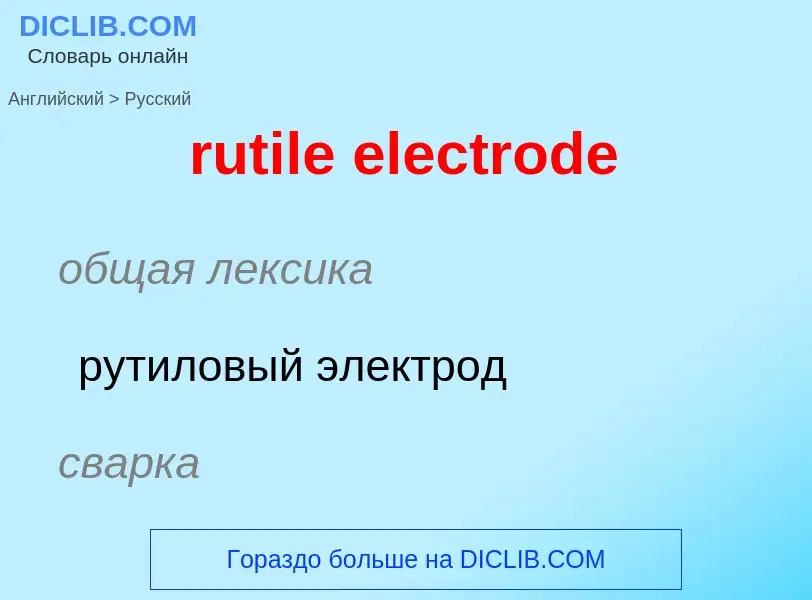Translation and analysis of words by ChatGPT artificial intelligence
On this page you can get a detailed analysis of a word or phrase, produced by the best artificial intelligence technology to date:
- how the word is used
- frequency of use
- it is used more often in oral or written speech
- word translation options
- usage examples (several phrases with translation)
- etymology
rutile electrode - translation to russian
общая лексика
рутиловый электрод
сварка
электрод с рутиловым покрытием
['ru:t(a)il]
общая лексика
рутил
рутиловый
существительное
минералогия
рутил
общая лексика
ион-селективный электрод
Definition
Wikipedia

Rutile is an oxide mineral composed of titanium dioxide (TiO2), the most common natural form of TiO2. Rarer polymorphs of TiO2 are known, including anatase, akaogiite, and brookite.
Rutile has one of the highest refractive indices at visible wavelengths of any known crystal and also exhibits a particularly large birefringence and high dispersion. Owing to these properties, it is useful for the manufacture of certain optical elements, especially polarization optics, for longer visible and infrared wavelengths up to about 4.5 micrometres. Natural rutile may contain up to 10% iron and significant amounts of niobium and tantalum.
Rutile derives its name from the Latin rutilus ('red'), in reference to the deep red color observed in some specimens when viewed by transmitted light. Rutile was first described in 1803 by Abraham Gottlob Werner using specimens obtained in Horcajuelo de la Sierra, Madrid (Spain), which is consequently the type locality.


![Rutile in quartz]] Rutile in quartz]]](https://commons.wikimedia.org/wiki/Special:FilePath/Quartz-159832.jpg?width=200)


![Acicular crystals of rutile protruding from a [[quartz]] crystal Acicular crystals of rutile protruding from a [[quartz]] crystal](https://commons.wikimedia.org/wiki/Special:FilePath/Rutile needles.jpg?width=200)
